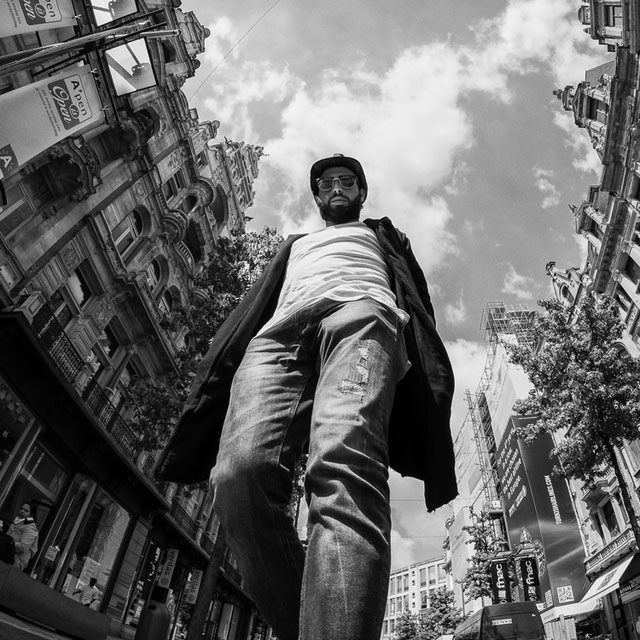Portraits in photography are often used to capture the personality of the subject, and to present a thought or feeling through the use of a human subject, making the photograph as a whole, more relatable.
Different camera techniques and editing skills can be used, depending on what the photographer is trying to portray in their image. The following are professional examples of different techniques that a photographer could use when taking a portrait image of a subject:
Posed portraits:

Photographers may decide to pose their subjects in order to convey a specific image, or to present an action or scene that would be difficult to capture in a candid photograph in everyday life.
Candid Portraits:

Candid photographs are images taken while the subject is not posing, and is instead completing a natural task in their natural environment. Candid photos are often used to show the personality of the subject, and makes use of the setting how it naturally is in everyday life.
Half-body Portraits:

Half body portraits are often used in professional photographs. They allow for the personality of the subject to show through in the photograph, but in a more professional manner, as the focus is still on the face and upper body posture.
3/4 length portraits:

3/4 length portraits typically focus on the top 3/4 of an individuals body, leaving out the bottom of the legs. this can be used to present the whole appearance of the subject (including clothes and posture) without minimizing any details that may be left out in, for example, a full body portrait.
Full body portrait:

Full body portraits are meant to show the viewer the entire posture of the subject, as their whole body is in the image. they are commonly used in fashion magazines, where the purpose of the image is to show a full outfit of clothing on a subject.
High angle portrait:

High angle portraits are often used to emphasis the small size of the subject. they place the camera in a position of dominance, and thus the subject is presented as smaller.
Canted angle portrait:

The canted angle is produced by tilting the camera at an angle, so that the horizontal lines within the image are no longer parallel with the frame of the image, and any vertical lines lie at an angle to the side of the frame of the image. This technique emphasizes the diagonal lines of an image, and can be used to emphasis drama and interest in an image.

Black and white portraits:
Black and white portraits are created during the editing process of an image. Using black and white can help to emphasis the shape, texture and contrasting tones of an image, and can make an image more effective if it uses different shapes and angles.
High-key portraits:

High key portraits make use of light colors, and images are often taking using lots of artificial light, using neutral colors in the image. High key images help to draw attention directly to the subject, as attention is not diverted by any bold colors or shapes.
Low-Key portraits:

Low-key portraits are the opposite of high key, making use of dark tones and a lack of light to create a shadowed effect on subjects. The images typically portray themselves as more serious and harsh, and add mystery to the subject due to a portion of them usually being shadowed in darkness.
Color Portrait:

Color is often used in portraits to draw maximum attention to the subject. Bold vibrant colors are often used to allow the subject to stand out, and the viewers attention is drawn to the colors and shapes that are emphasized.
low-angle portraits:

Low angles are often used to present the opposite features to high angles. A low angle image places the subject in a position of dominance, making the subject seem larger, and more threatening to the viewer.
Head-shot Portrait:

Head shots are often used to place maximum emphasis on the facial expression of the subject. The identities of the subject are often clear, and the image would be used to focus on the subjects reaction to something, or to help identify them easily (e.g head shots are used in passports to identify people) without the addition of any unnecessary features that may draw attention away from the face (e.g bright clothing).

Good…just be careful to caption / label images to credit the photographer (or point out that they are your own!)